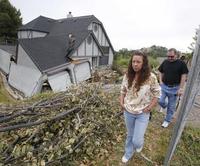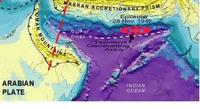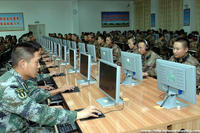-
Obama administration shifting cybersecurity legislative strategy

The Obama administration’s has shifted its cybersecurity legislative strategy. Rather than emphasize DHS-monitored regulations – an approach which stalled in Congress last summer because of Republican opposition — the administration is focusing on getting Congress to help promote the voluntary adoption by industry of standards being developed by the National Institute of Standards and Technology (NIST) following a February 2013 executive order signed by President Obama.
-
-
California community sinking into the ground, and engineers are baffled

Several homeowners in the community of Lake County, California are faced with a problem: their houses are sinking into the ground and they do not know why. The situation has been deteriorating steadily, and now mail delivery has been cancelled in the area, and city and county crews have been forced to change the subdivision’s sewage line to an overland pipe as a result of manhole collapses.
-
-
State agency imposes heavy fine on PG&E for San Bruno blast
The California Public Utilities Commission (CPUC) two weeks ago wrapped up its investigation of a 2010 gas pipeline explosion in San Bruno, California, and recommended that Pacific Gas and Electric (PG&E) pay $2.25 billion for its negligence, which led to the blast.
-
-
New software protects networked control systems from cyber attacks
Researchers have developed a software algorithm that detects and isolates cyber-attacks on networked control systems — which are used to coordinate transportation, power, and other infrastructure across the United States.
-
-
Hazard of Western Indian Ocean earthquake, tsunami greater than thought

Earthquakes similar in magnitude to the 2004 Sumatra earthquake could occur in an area beneath the Arabian Sea at the Makran subduction zone, according to recent research. The study suggests that the risk from undersea earthquakes and associated tsunami in this area of the Western Indian Ocean — which could threaten the coastlines of Pakistan, Iran, Oman, India, and potentially further afield — has been previously underestimated.
-
-
Wave of cyberattacks targets American energy companies

A new wave of cyberattacks has been hitting American corporations, and federal officials, say the attackers, who reside somewhere in the Middle East, are trying to sabotage these corporations. The majority of the targets have been energy companies, and the attacks are trying to take control of company’s processing systems.
-
-
Assessing asteroid risk to Earth
Of the more than 600 000 known asteroids in our Solar System, almost 10 000 are classified as near-Earth objects, or NEOs, because their orbits bring them relatively close to Earth’s path. A dramatic proof that any of these can strike Earth came on 15 February, when an unknown object thought to be 17-20 meter in diameter arrived at 66 000 km/h and exploded high above Chelyabinsk, Russia, with 20-30 times the energy of the Hiroshima atomic bomb.
-
-
U.S.: China orchestrating broad cyberattack campaign against U.S.

The Obama administration accused China’s military of orchestrating a campaign of cyberattacks against American government computer systems and defense contractors for the purpose of identifying “military capabilities that could be exploited during a crisis.” Cyber experts estimate that about 90 percent of all cyberattacks in the United States originate in China, but these estimates have typically been offered by private-sector experts. The Pentagon’s annual report to Congress, released Monday, is the first government document specifically and explicitly to assert that the People’s Liberation Army (PLA) is behind a sustained, systematic campaign of cyberattacks on the United States in an effort to gain a strategic advantage over the United States. The report also pointedly notes that Chinese investments in U.S. companies aim to help this cyberattacks campaign.
-
-
New grass hybrid helps reduce runoffs, flooding

Scientists use hybridized forage grass to combine fast root growth and efficient soil water retention. Field experiments show Festulolium cultivar reduces water runoff by up to 51 percent against nationally-recommended cultivar. The hybrid captures more water and reduces runoff and likelihood of flood generation.
-
-
Lower waves' impact on coastal communities uncertain
Coastal impacts of climate change studies have predominantly focused on the influence of sea-level rise and, until now, not focused on how changing wave conditions will impact the coastal zone in a changing climate. Scientists note, though, that waves are dominant drivers of coastal change in these sandy environments, and variability and change in the characteristics of surface ocean waves can far exceed the influences of sea-level rise in such environments. Since warmer oceans will see lower waves, the effect of warming on coastal communities is uncertain.
-
-
Governments, businesses should be “cyber-risk intelligent”
Cyber-threats must require governments and businesses to be “cyber-risk intelligent.” Three general flows of information determine an organizational frame for cyber-risk intelligence: one that encompasses the awareness of the IT enterprise and its apparent health; a second that brings internal business activities into view; and a third that encompasses broader geopolitical and economic forces.
-
-
New technology prevents bridge collapse
Researchers propose a new technology that could divert vibrations away from load-bearing elements of bridges to avoid catastrophic collapses. The researchers propose a “wave bypass” technique that has many similarities to those being used by researchers looking to create Harry Potter-style invisibility cloaks, which exploit man-made materials known as metamaterials to bend light around objects.
-
-
Helping bridges withstand natural disaster
Structural control systems have the potential to help our civil infrastructure, such as bridges, roads, and buildings, withstand natural disasters such as earthquakes or storms. Traditional control systems based on sensors connected by wired networks, however, are costly, labor-intensive, and tend to break during disasters, when they are needed most.Wireless networks that are easier, cheaper, and more resilient to structural damage.
-
-
Draft of the 2013 U.S. National Climate Assessment is out
As mandated by the U.S. Global Change Research Act (GCRA), the U.S. Global Change Research Program (USGCRP) is currently producing a National Climate Assessment (NCA). The NCA is a report to inform the president, the Congress, and the American people about the current state of scientific knowledge regarding climate change effects on U.S. regions and key sectors, now and in the coming decades. The National Research Council (NRC) says that as the United States continues to engage with the threats, opportunities, and surprises of climate change in its many manifestations, the 2013 NCA should prove to be a valuable resource.
-
-
DHS chemical plant security program hobbled by problems, poor oversight
A DHS program responsible for the security of chemical facilities, such as the West Fertilizer Company plant in Texas, has been ineffective owing to a number of issues, leading federal investigators to wonder “whether it can achieve its mission, given the challenges the program continues to face.”
-
- All
- Regional
- Water
- Biometrics
- Borders/Immig
- Business
- Cybersecurity
- Detection
- Disasters
- Government
- Infrastructure
- International
- Public health
- Public Safety
- Communication interoperabillity
- Emergency services
- Emergency medical services
- Fire
- First response
- IEDs
- Law Enforcement
- Law Enforcement Technology
- Military technology
- Nonlethal weapons
- Nuclear weapons
- Personal protection equipment
- Police
- Notification /alert systems
- Situational awareness
- Weapons systems
- Sci-Tech
- Sector Reports
- Surveillance
- Transportation
Advertising & Marketing: advertise@newswirepubs.com
Editorial: editor@newswirepubs.com
General: info@newswirepubs.com
2010-2011 © News Wire Publications, LLC News Wire Publications, LLC
220 Old Country Road | Suite 200 | Mineola | New York | 11501
Permissions and Policies
Editorial: editor@newswirepubs.com
General: info@newswirepubs.com
2010-2011 © News Wire Publications, LLC News Wire Publications, LLC
220 Old Country Road | Suite 200 | Mineola | New York | 11501
Permissions and Policies
